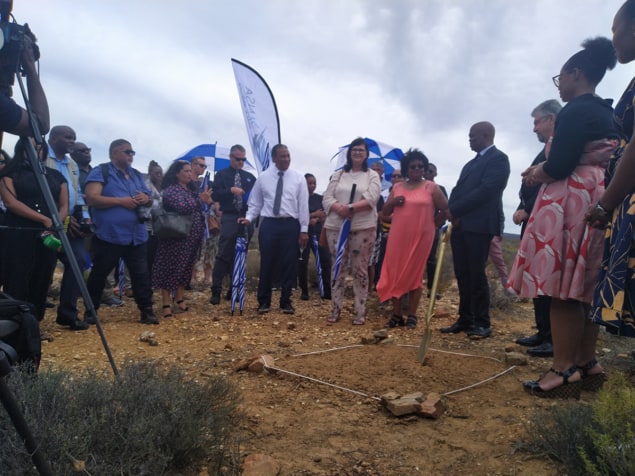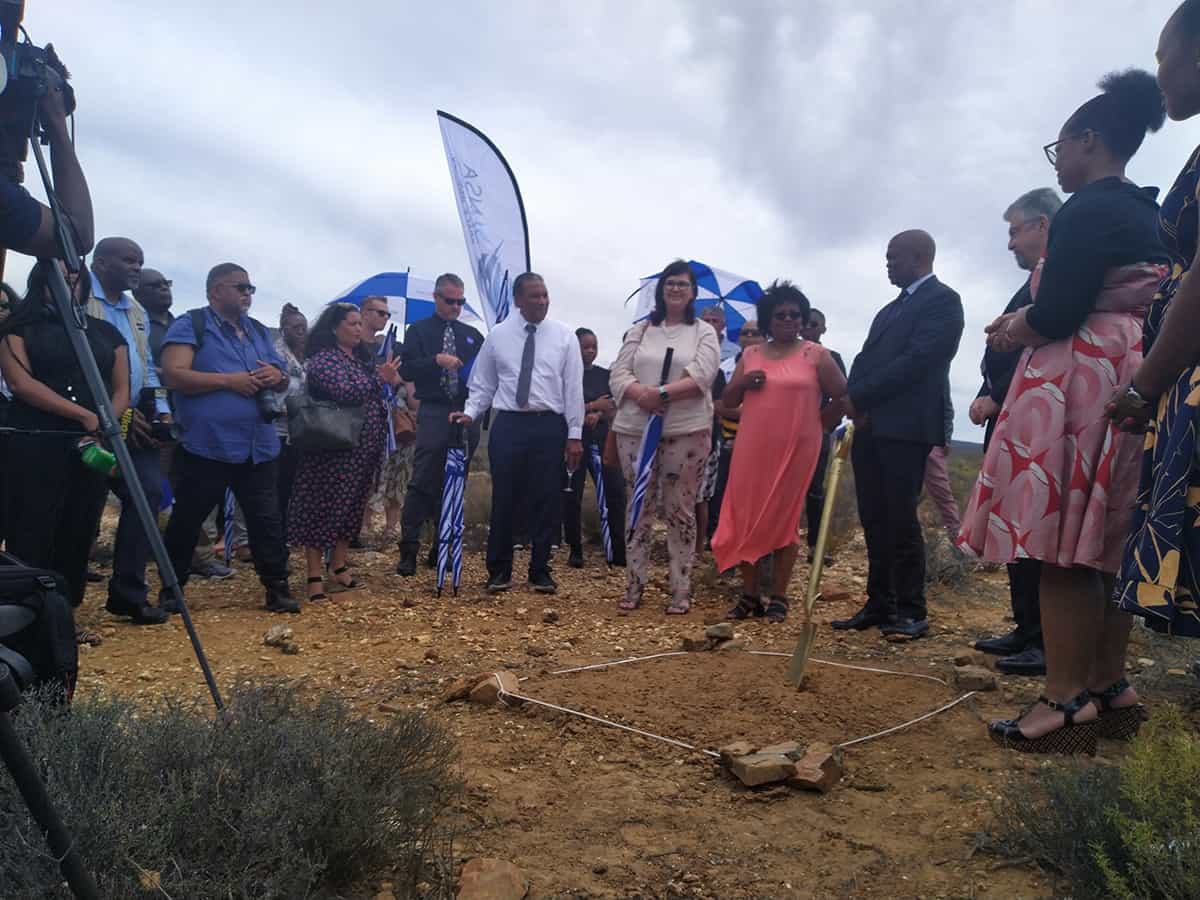
Officials gathered on 8 November to break ground on a new facility in South Africa that will support human spaceflight missions to the Moon and possibly Mars. Matjiesfontein in the central Karoo region of the Western Cape will host the new Lunar Exploration Ground Sites (LEGS) antenna to help ensure near-continuous connectivity between astronauts on NASA’s Artemis spacecraft.
Located about 240 km north-east of Cape Town, Matjiesfontein has a dry and clear climate. It will host one of three LEGS antennas to provide communications to those working on and around the lunar surface. The other LEGS facilities are in NASA’s White Sands Complex in Las Cruces, New Mexico, and a still-to-be-determined location in Australia.
Badri Younes, deputy associate administrator for NASA’ss pace communications and navigation (SCaN) programme, says that the radio antenna is designed to provide direct-to-Earth communication and navigation for missions operating up to two million kilometres away. Younes says they anticipate the LEGS antenna in South Africa will cost around $25–30m, with the South African National Space Agency supplying the funds to manage and cover operational costs.
Bill Marinelli, a SCaN development director at NASA who helped to pick the site, says the choice was based on many factors, including how governance and bilateral agreements could boost co-operation and technical expertise. South Africa first started working with the US on space projects in the 1950s and 1960s when it helped gather data for NASA’s Apollo Moon landings.
A letter of intent has also been signed by NASA and the South African Department of Science and Innovation (DSI) to formalize the space exploration partnership.

NASA’s new rocket successfully fires Orion capsule towards the Moon
“We see this partnership as mutually beneficial,” says Phil Mjwara, director-general of South Africa’s department of science and innovation. “Matjiesfontein ground station will alleviate increased demand for NASA’s Deep Space Network, allowing Artemis to meet its goals and expand our scientific knowledge of key challenges to astronaut health and safety, such as space radiation, isolation and confinement, closed environments, and extreme and prolonged distance from Earth.”
The construction of the new deep-space ground station is set to begin early next year and aims to be complete before the first crewed Artemis mission to the lunar surface in mid-2025.
